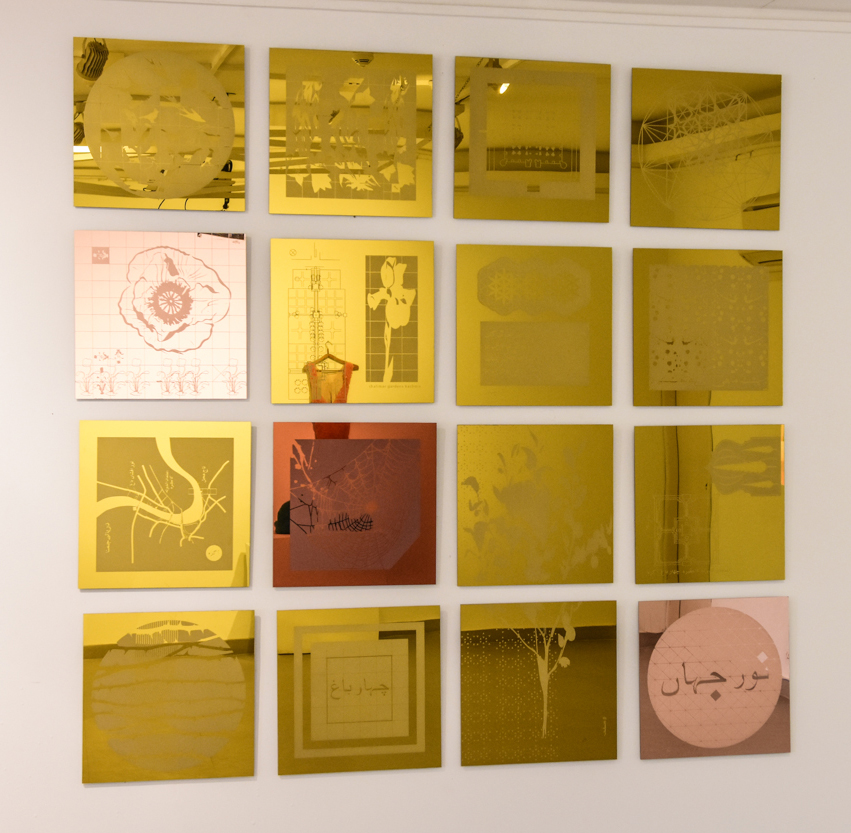Sabah Husain
Born in 1959 in Peshawar (Pakistan)
Lives and works between Lahore (Pakistan) and Boston (USA)
Sabah Husain is a visual artist and curator. She received her B.F.A from National College of Arts, Lahore and M.F.A from Kyoto University of Fine Arts and Music, Japan, in 1988. During the period 2014-15, she conducted her Post Doctoral Research and Studio Practice at the School of Museum of Fine Arts, Boston, USA. She has held various group shows at: the School of Museum of Fine Arts, Boston; Kyoto City Museum, Japan; Victoria and Albert Museum, London; Asia Pacific Museum, California; and the National Art Gallery, Islamabad, Pakistan. Selected solo exhibitions were held at: the Embassy of Pakistan in Washington DC, 2015; Yamaso Art Gallery, Kyoto; and October Gallery, London. Her works are in the collection of National Art Gallery Pakistan, Permanent Collection of the U.S Embassy Islamabad, [AIE] Pakistan, Victoria and Albert Museum, British Museum and Bradford Art Galleries and Museums, U.K and Okinawa Museum, Japan. In 2004, she was awarded the Japan Foundation Fellowship. In 1996, she received the National Excellence Award at the 7th National Exhibition of Visual Arts, Islamabad Pakistan. In 1987, at the Kyoto Museum Exhibition, she received the Musrasaki Award. From 2000 to date, she has served as Adjunct Faculty, Department of Fine Arts, M.F.A, National College of Arts Lahore. Her artistic practice draws from a wide range of influences, with music and poetry remaining pivotal to her work.
Husain’s work for the Karachi Biennale 2017, Nur Jahan, is an homage to the eponymous Mughal Empress, epitomising the artist’s multi-medial approach. Husain explains the importance of the aesthete who ruled India: “She was a remarkably powerful influence on the aesthetics of her age. Nur Jahan's narrative is unique because she did not conform to the established ideals of a woman of the time and stood outside the realm of traditional Indian prototype. Her story is one of political dexterity, military competence and numerous cultural achievements.” In Nur Jahan the artist has referenced three architectural structures which she patronized and designed: her father, Itamad ud Daulla's garden tomb in Agra; the Nur Afshan river-front garden on the River Jamuna in Agra; and her own tomb in Lahore, on the banks of the River Ravi. Husain has used the plans of these gardens and tombs, maps of the cities and the architectural embellishments to create a visual narrative in coloured glass, in conjunction with a concurrent strand derived from Nur Jahan's portraits, images of her royal decrees and the coins minted in her name, using embroidery and Kozo paper. Husain’s work addresses the erasure from collective consciousness of the only Mughal Empress of India, whose accomplishments in the arena of arts equal, if not surpass, those of most men who ruled India.

Nur Jahan, 2017.
Glass, handmade paper (kozo, mitumata, gampi fibres), sumi, acrylic paint and embroidery
243.84 x 121.92 cm, 121.92 x 91.44 cm.
Courtesy the artist

